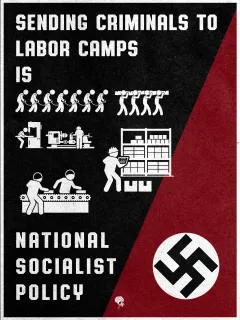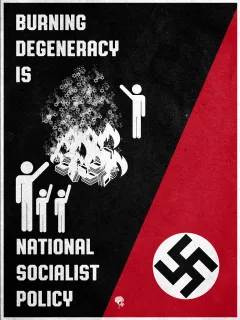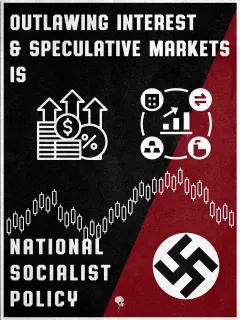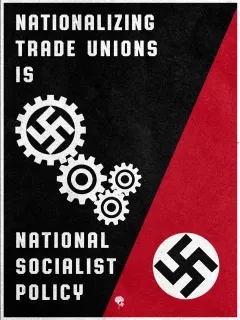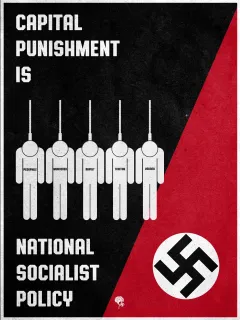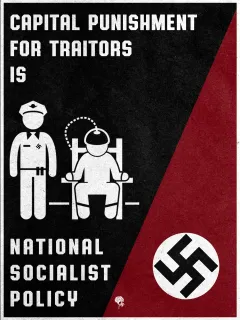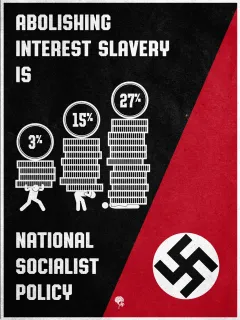Russia. No. 1 (1919). - 60. Appreciation of the Economic Situation
No. 60.
Appreciation of the Economic Situation, Compiled from Statistics in the Possession of His Majesty's Government.
____________
1. BOLSHEVIK FINANCIAL METHODS AND BOLSHEVIK CURRENCY.
(a.) General.—We see throughout the area controlled by the Bolshevik Autocracracy a destruction of the industrial and commercial system which has been based on the models of Western civilisation.
Bonậ fide commerce and industry is at a standstill, necessities of life are scarce and obtainable only at exorbitant prices, expressed in terms of a depreciated currency issued without regard to sound principles of finance.
The peasants employed in agriculture and thus controlling the essential products of the soil are less imbued with Bolshevism than the factory hands and town dwellers. They will not sell their supplies for a depreciated currency, but part with them only in exchange for the necessary products of those trades and industries, mainly centred in the towns, which Bolshevism has paralysed or destroyed.
There can be no two opinions as to the fact that the basis of national and international trade and industry is vitally bound up with the banking system. If, therefore, the situation created by the nationalisation of all Russian banks is examined, it will go far to show that the assertion freely made that the banking system has completely broken down is perfectly justifiable, and further that, this being so, trade and industry in the accepted sense, when they are not at a standstill, are at any rate not being conducted on an economically sound basis. The paralysing effect which Bolshevik decrees have had upon trade and industry may be thus illustrated:
(b.) The Nationalisation of Bank Balances.—In effect, this is a provision by which all current accounts become governmentally controlled. Permits to draw on such accounts are granted up to 1,000 roubles per month, without any regard to the amount standing to the credit balance of such accounts. As a result, no individual commercial house, shop or business of any kind, which is not controlled by a duly authorized Bolshevik committee, has a credit value of more than 1,000 roubles per month. If it be taken into consideration that the life of any such Bolshevik committee is very precarious and depends to a great extent on the number of bayonets supporting it, it will be clearly understood that the ordinary system of trade and industrial credits has ceased to exist.
All securities, including Government stocks, Treasury bills, bank, trading, and industrial stocks and shares have been nationalised. After a rough and ready valuation, holders of such securities are credited with a cash balance, subject, of course, to the embargo mentioned.
A few comments are illuminating evidence of Bolshevik failure:―
The "People's" Bank can hardly claim any depositors, despite the fact that the last banking institution (Moscow Narodni Bank) which remained outside the nationalisation decree was taken under Government control about two months ago. In other words, the "People's" Bank, the only remaining bank, inspires no confidence. This lack of confidence arises from several different causes. Among them may be numbered the absolute insecurity arising out of the wholesale corruption prevalent throughout the Bolshevik administration, and particularly in the Bank administration.
The malversation of incredibly large sums of money is of daily occurrence. Other causes are the insufficiency and incompetence of the bank staffs. In fact, the interest of 3 per cent. payable on all bank balances is hardly ever credited. It is no exaggeration to state that under the Bolshevik financial regulations there has been a complete breakdown of the credit system. The cheque has fallen into disuse. There are no longer any securities to enable a trade or an industry to obtain credit, and loans cannot be raised.
It may be well asserted that, with production ever on the decrease (in some industries it has fallen to 5 per cent. of the normal) and consumption on a starvation basis (e.g., the population of Petrograd, owing mainly to emigration consequent on unemployment and disease, has dwindled from 2¼ millions to about 650,000 to 700,000), the economic system in Russia under Bolshevik influence has had the disastrous results of completely paralysing the trade and industry of the country.
A conclusive proof of Bolshevik economic bankruptcy is afforded by their latest budget statement for 1919, which runs as follows, in round figures:―
Expenditure.
28 milliards of roubles
Revenue
Deficit to be covered by fresh issues of paper
Taxes … … … … … 2 milliards of roubles.
Contributions from the "Bourgeois classes" 10 " “
currency … … … … 16 " “
___
Total … … … … 28 " “
___
(c.) Ukraine. ̶ The first Bolshevik invasion of the Ukraine destroyed, as it did in Northern Russia, the existing trade and industrial life of the country. It failed, as it has done in Northern Russia, to construct trade and industry on a new basis. The occupation by Germany of the Ukraine re-imposed the old order of things. However much the economic life of the Ukraine must have suffered from these two violent and rapid changes, as an illustration of the confidence restored by the overthrow of Bolshevism, even by a foreign enemy―the re-opening of the private banks at Kieff under their old management may be quoted. Hundreds of would-be depositors of millions of roubles beseiged these banks for days in succession. It is indeed a justifiable presumption that should the Bolsheviks again make themselves masters of the Ukraine, with the greater experience they have acquired since their first inroad into that country, their demolition of trade and industry will be more thorough than on the former occasion. Here as elsewhere under the Bolshevik rule, there will then be the same absence of security for capital and industry and the almost equal lack of security for life itself.
(d.) Notes on Bolshevik currency.―The following observations with regard to the Bolshevik currency situation are of interest: ̶ ̶
(1.) The Bolshevik Government have lost large amounts of bullion, and have no possibility of attaining any fresh cover to their paper issue.
(2.) An issue of two milliards of paper monthly still continues.
(3.) It appears that the Bolshevik Government have never dared to issue paper money of their own, having relied on fresh issues of Kerensky money, which is still accepted by the people, and probably on illicit issues of, ostensibly, Czar roubles.
In the event of the people ceasing to accept the present paper currency, and of no organisation of barter being established in its place, disaster must finally overtake the Bolshevik régime.
2. BOLSHEVIK RELATIONS WITH THE ZEMSTVOS.
The nearest English equivalents to the Zemstvos are the Rural District Councils and the Local Government Board.
They have proved of the greatest assistance during the war. Without the Union of Zemstvos it is doubtful if the Quartermaster General's department of the Russian army could have coped with the situation, as they undertook practically the whole of the food organisation. It is stated that the late Czar credited them with political intrigue, and wished to disband them, but this was vigorously resisted by the Grand Duke Nicholas, then Commander-in-Chief of the Russian army. Under Kerensky the Zemstvos were reorganised and their power amplified. It was projected that they should form the electoral machinery for the Constituent Assembly, but this scheme was not in full working order at the time the Bolsheviks seized power. The Bolsheviks, realising that they had to deal with a body practically controlling the agricultural supplies of the country, were very careful in their attitude at first. The Bolsheviks attacked the members of the Zemstvos on the ground that individually they were counter-revolutionary, but went no further until, with increasing power, they felt strong enough to assail the executive branches and finally the whole system. Their purpose was two-fold:―
(1.) To destroy the machinery for the election of a Constituent Assembly.
(2.) To obtain complete domination over the peasantry, and consequently the handling of rural produce.
Domination of the peasantry they have never really obtained, but they sowed distrust against the Zemstvos by suggesting that these bodies were retarding the distribution of the land. The destruction of the authority of the Zemstvos was not replaced by confidence in the Bolsheviks. The peasants refused to place their produce on the markets as it was so often sequestrated. They demanded clothing, agricultural machinery and household goods, and refused the paper money which was of no use to them. The vicious circle was established of complaint by the workpeople that the peasants would not supply food, and on the peasants' side that the workpeople would not supply the implements necessary for their toil. Result ―chaos and famine.
3. BOLSHEVIK RELATIONS WITH CO-OPERATIVE SOCIETIES.
These are closely allied to the Zemstvos, but have no administrative functions The Bolsheviks were very chary of interference with these bodies in the earlier stage, recognising that they were the embodiment of one branch of socialist thought. The Co-operative Societies were, and are, a body of considerable power representing the financial interests of a large proportion of the peasant population. The "People's" Bank in Moscow, which was practically owned by the Co-operatives, was for a time allowed almost unrestricted freedom of action.
A very large percentage of Russian raw material passes through the hands of the Co-operatives, and the Bolsheviks realise that resumption of trade relationship with other countries is in no small way dependent on this functioning of the Co-operatives. These latter have stoutly defended their rights, and many collisions have occurred in the attempts of the Bolsheviks to sequestrate money and goods belonging to them.
Should the Bolsheviks succeed in the domination of the Co-operatives it will be another blow to the possibilities of reconstruction of Russian economic life.
4. NATIONALISATION OF INDUSTRY.
First attempts at the nationalisation of industry were carried out at the Putilof (the Russian Krupps) and the Oboukhovski Gun Works near Petrograd. These works, in fact, provided the nucleus of the workmen's army under the Bolshevik régime,as they had also been among the first insurrectionists in the earlier revolution.
The nationalisation of factories developed until it included all the Petrograd works, and was eventually extended to Moscow.
Having ordained the nationalisation of industry, extraordinary measures were adopted by the Bolsheviks in their endeavours to secure apparent success for their schemes. When it was realised that factories could not survive the removal of the brains of the industry represented by the owners, managers and staffs, laws were passed to "protect" the workpeople; among others, a regulation that no workman could be dismissed on grounds of ill-health, incapacity, or idleness. Such questions had to be referred to the Workmen's Committee, who invariably sided with the employee. If a workman was called up as a "Red Guard" he was entitled to demand from his employer full pay during his absence on service, and in certain cases 70 per cent. of the work- people being absent as Red Guards, the remainder declined to work on the ground that it was impossible to operate the factory, but demanded none the less full pay during their idleness.
The technical staff in most cases followed the example of their employers in declining to serve except where poverty made such a course impossible. Attempts were made by the Soviets to enforce the attendance of the staff, who in such cases attended, but adopted the attitude of passive resistance. Wages increased and output decreased. One may mention the instance of a railway wagon works where, based on the number of men employed, the wages paid and the work done, a completed wagon cost 180,000 roubles. Gradually the owners, either ruined or realising the impossibility of continuing under these conditions, have surrendered their works to their Soviet masters.
5. MINING.
(a.) General. ― From 1914 - 1918, the mining industry passed through four
phases―
(i.) 1914. When output was normal.
(ii.) 1915 - 1917. Increasing output, qualified by periods of decrease owing to injudicious mobilisation of working hands.
(iii.) 1917. The revolution. Rapid decrease in output and increase in cost of working.
(iv.) 1917. November to date. Increasing state of chaos. Nationalisation. Increase of wages to such an extent that the payment of workpeople had to be subsidised by the State. Output negligible.
It is impossible to give in a short summary full details, but a few figures are quoted from reliable sources concerning key mining industries.
(b.) Coal. ―In the Donetz basin, on which industrial Russia mainly depends, the first revolution in 1917 resulted in a 13 per cent. decrease. The number of pits working in November 1918 is given as 30, compared with 390 in normal times. Only the smaller pits were working, the Bolsheviks, either purposely or through negligence, having flooded the larger pits. As the district contains no spare plant or repairing units, it is impossible to resume work. The Donetz normally supplied about 1,505 million poods* per annum.
Such reconstruction and resumption of work as was possible during Ukranian (anti-Bolshevik) occupation has ceased in the face of the present Bolshevik menace.
The following statistics show the terrible conditions : ―
Tons.
September, 1917, output … … … 1,358,000
October, “ “ … … … 1,136,000
November, “ “ … … … 1,225,000
Bolshevik régime ―
December, 1917, output … … 811,000
January, 1918, " … … 491,000
In the Ural mountains the coal production fell from a normal 6-7 million poods monthly to 800,000-900,000 poods monthly, i.e., an 86 per cent. decrease.
On the 23rd January, 1919, the Council of National Economics proposed to close down all factories, even arsenals, in order to devote all available coal to the railways.
*One pood equals 36 •11281 lbs, avoirdupois.
(c.) Iron.—The principal ironfields of Russia are in the south―the Krivoi Rog, supplying 75 per cent., and in the Urals. The Krivoi Rog district mined about 3,000,000 tons of ore per annum prior to the war, employing 23,000 hands. The following extract from the "Frankfurter Zeitung," 7th November, 1917, refers to ironworks in the Krivoi Rog :―
At the Gdantsevski Works only 400 workmen remain.
The Nikopol Mariupol Works, which had a normal monthly output of 500,000 poods, produced only 17,000 poods during April, 1918, and in May, 1918, work stopped entirely.
At the Donetz-Yurievska, work has been at a standstill since May, 1918.
At Bryansk only 2,500 workmen remain out of 6,000, the normal number.
The Bogoslavski district in the Urals decreased in output from 250,000 poods; per month to 200,000 and less. Up to 1st May, 1917, sums to the amount of 195,000,000 roubles had been advanced by the Government, but hitherto with no visible success in the restoration of the industry.
(d.) Summary.―The same history applies to copper, oil, manganese as has been touched on in iron and coal. The nationalisation, or rather total allocation to the local workpeople, of the works, was based on the firm belief that the profits shown in the past under business organisation would be maintained in the future. The saner elements among the workpeople and "commisars" realised that the pace in wages, &c., could not be maintained, but the extremists continued to agitate, and eventually the Government had to subsidise the industry with its "paper" money in order to placate· the extremist elements among the workpeople.
After November 1918 owing to the rupture of relations with the Ukraine, and the Czecho-Slovak operations in the Urals, the Bolsheviks became dependent on the coal mines in the Moscow district. During the first six months of 1918 these mines produced 10,000,000 poods (161,300 tons) and the northern mines produced 400,000 poods per month, or together less than 2,000,000 poods per month, whereas Petrograd required 14,000,000 poods per month in normal times.
6. ― AGRICULTURE.
(a.) Grain.―When we come to consider the great agricultural resources of European Russia our attention is again directed to the Ukraine, which area, in spite of unsatisfactory systems of land tenure and antiquated methods of farming, produced a large proportion of Russia's total exportable surplus of grain. It exported in 1913 some 33,000,000 tons of grain and, in addition, this region accounted for 80 per cent. of the normal production of beet sugar in Russia.
Present production is hampered to a considerable extent, not merely by the original difficulties mentioned above, but by the unsettled conditions of labour and life generally produced by the war and the revolution.
The pillage of private estates and stores of grain, coupled with the bad condition of transport, has deterred production, encouraged waste and prevented the collection and distribution of the produce available.
These adverse conditions have been accentuated by the deficiency of agricultural machinery. Prior to the war, nearly two-thirds of the agricultural machinery used in the Ukraine (and its use was then increasing, and further increase is now urgent, having regard to the need for improved farming), was of Russian manufacture ; the factories having been subsequently converted to war purposes and being now unable, through difficulties of labour and material, to resume their former activities, the Ukrainian cultivators have for some time past been compelled to look to outside sources for their supplies as they will be equally compelled to do for some years to come.
The available information as to the harvest of 1918, and as to stocks existing prior to that harvest, goes to show that production although much reduced is still substantial. In February 1918 it was estimated that stocks of grain to the extent of some 4,000,000 tons probably existed in the Ukraine, and that efforts to remove these stocks to the Central Empires would meet with only a modest degree of success, owing partly to the attitude of the peasants in refusing to part with their stocks, and in concealing them, and still more to the limited supply and poor condition of the available transport. Subsequently information has confirmed that the Central Powers have not obtained any considerable supplies from the Ukraine.
The total area sown in the Ukraine by the end of the 1918 spring sowings, has been officially stated to be as high as 80 per cent. of the normal and this statement is probably but little exaggerated.
Estimates of the yield of the 1918 harvest are somewhat variable.
On 31st August, 1918, the "Mϋnchener Neueste Nachrichten" stated that the Ukraine harvest was above the average and that 1,600,000 tons would be available for export.
On 5th September, 1918, the "Vossische Zeitung" reported that the summer wheat and rye crops range from inferior to positively bad, while barley and oats were no better. Winter cereals, on the other hand, were above-average, or good.
On 18th September, 1918, "Vorwärts" published an estimate, compiled from official data, stating that the total Ukraine harvest would show a yield of 15,040,000 tons, of which the figures for the four principal cereals were as follow:―
Tons.
Wheat … … … … … … 5,000,000
Rye … … … … … … 3,667,000
Barley … … … … … … 2,840,000
Oats … … … … … … 1,800,000
On 2nd November, 1918, the "Pester Lloyd," publishing closely corresponding figures, compared them with those of 1912 (not a particularly good year), which showed that 1918 was about 25 per cent. worse in results. This report also stated that the exportable surplus would be 2,600,000 tons.
On 1st January, 1919, it was reported by the British representative at Odessa that good stocks of grain were lying in the district south of the Dnieper, and west of a line running from Kherson to Perekop, while a large area was sown with winter grain.
The harvest in Great Russia is stated to have been better than was expected, while in the Northern provinces a serious shortage exists of seed grain.
(b.) Sugar.― With regard to beet sugar, of which the Ukraine area under cultivation in 1917 was said to be 572,000 hectares, as compared with 750,000 in 1914, the 1918 area will certainly not have been greater than that of 1917. The figures for production (all Russia) are as follows:―
Cwts.
1914-15 … … … … … … 38,788,000
1915-16 … … … … … … 35,867,000
1916-17 … … … … … … 26,432,000
1917-18 … … … … … … 20,572,000
The only report available as to 1918 ̶ 19 sugar production makes it probable that this will fall far below even the poor result of 1917—18.
(c.) Live-stock.― With regard to the quantity of live-stock at present held in Russia, the Soviet authorities have asserted that stocks have actually increased under their régime, and have published statistics purporting to establish their assertions. Low as stocks must have been when the Bolshevik government was established, it is not possible that they can have increased or even kept their level, and the Soviet statistics must be regarded as fictitious or misrepresented. The Soviet authorities give no explanation as to how any increased stock has been, or can be fed, nor do they state how stocks have increased in face of the urgent demand for food in the towns and the consequent high prices to be obtained for meat.
(d.) Summary.― It thus appears that agricultural conditions in the Ukraine are improving subject to the serious obstacles presented by a lack of implements and machinery, insufficient and defective conditions of transport and in spite of unsettled conditions.
That the position in the Ukraine is no worse and thus does not approximate to that obtaining in Northern and Bolshevik Russia must be attributed to the comparative independence from Soviet influence which the Ukraine has succeeded in maintaining.
If, however, reports are true as to the gradual encroachment of Bolsheviks into Ukraine territory, a repetition of the state of affairs existent in North Russia is bound to occur. Inasmuch as under normal conditions South Russia practically fed North Russia—the amount of wheat sent in from Siberia being proportionately small―disorganisation in these southern provinces would remove all hope of immediate relief to Northern Russia, excepting such foodstuffs as might be imported from abroad. Reliance can hardly be placed on immediate relief from Siberian stocks, as owing to railway disorganisation, a considerable period must elapse even after the downfall of the Bolshevik régime before Siberian supplies could be sent into Russia in any quantities.
As a contrast between normal conditions and the consequences of Bolshevik control the following comparative statistics tell their tale.
In pre-war times the grain situation was as follows:―
Tons.
Russia Empire total production … … 64,500,000
Total interior trading grain … … 20,000,000
Consumption in producing area … … 37,000,000
Total available for export … … … 7,500,000
Grain situation at beginning of 1918: ―
European Russia total production … 43,500,000
Siberia Russia total production … ... 8,000,000
Russian Empire … … … 51,500,000
Consumption in producing area … … 37,000,000
Non self-supporting districts of Northern Russia and Finland require
... 18,000,000
Total available for export … … ... Nil
Deficit in Supply … ... … … 4,500,000
The above is based on normal ration (Government estimates at 2 pounds per man per day).
The Food Ministry estimates, 1917, demanded as a minimum:―
For the Army … ... … 645,000 tons per month.
For civil population … ... 484,000 tons per month.
Minimum total … 1,129,000 tons per month.
The actual available supply proved in 1917 to be less than 50 per cent. of this total. It must be remembered that these supplies were essentially dependent on Ukraine grain being available. It may be mentioned that the Government of Samara, which normally contributed 800,000-900,000 tons of grain to Russia's requirement, itself, demanded help from outside in 1917. This was the state of affairs a year ago, matters are now still worse and even the Ukraine, according to later information, lacks seed grain for spring sowing. The only district approaching the normal is the Kuban.
7. TRANSPORT.
(a.) General.―Without sufficient transport the existing Bolshevik régime is doomed. and they appear to have early realised the importance of obtaining control of the railways, although to this day they have a hard fight to maintain their domination, as is instanced by the hostile reception given to Radek when he attempted to address the Vologda Executive of the Railwaymen's Union.
(b.) Rail transport.―The railway personnel have shown a greater resistance to Bolshevism than any other branch of labour in Russia. This applies in the main to the operating executive―the repair and workshops being contaminated at an early date.
The Railwaymen’s "VekseI" in the earIy days of Bolshevism vigorously combated extremist policy, but the Bolsheviks, by careful propaganda, gradually replaced the executive with men favourable to their views.
The minor officials and men on the Nicholas Railway, Petrograd―Ekaterinburg, are anti-Bolshevik but are obliged to conceal their views.
A complete deadlock was reached in Moscow in December 1917 owing to the political differences between the various sub-unions of railwaymen, causing thousands of wagons of food supplies to be left unloaded. Order was eventually restored by a British officer taking the matter into his own hands and appointing himself controller for the time being. As an instance of the state the railways were in 1917, an extraordinary commission from Petrograd decided, in view of the food crisis in Russia, to run 20 pairs of trains per day on the Trans-Siberian line. The actual number run was 6 pairs.
The present decay in the maintenance of rolling stock dates from the beginning of the war. A temporary increase of efficiency was produced by the introduction of American rolling stock, but owing to neglect and non-execution of running repairs as much as 37 per cent. of the American locomotives on the Siberian railway were out of action in February, 1918.
The percentage in European Russia is probably still greater.
In the Ukraine it was computed six months ago that from 45 to 50 per cent. of the rolling stock required repair. Spare parts are lacking and the workshops could not cope with the demand, their output being diminished by the reduction of working hours, prohibition of overtime and abolition of piece-work. One of the most serious difficulties resulted from the scarcity of coal.
The interference of the revolutionary committees in railway administration has not only encouraged disorder but has increased expenditure; on the South Western Railway alone it was reckoned that 16,000 superfluous employees were drawing pay at total annual rate of 46 million roubles, while for the whole Ukraine system the total payable to unnecessary personnel was computed at 200 millions of roubles per annum.
Under such disastrous conditions, as is only to be expected, in spite of enormously increased rates the railways are working at a loss, and the deficit for 1918 on the railways of the Ukraine has been put at 800 millions of roubles.
(c.) River transport.―The waterways of Russia, especially the Volga, were in normal times served by an efficient fleet of steamers and barges. The economic life of Russia is in fact bound up with the river and canal systems of the country, much of the oil and grain and practically the whole of the timber transport being effected by water.
Nationalisation of vessels and the extremist attitude adopted by many of the "Artels”* of the crews, bargemen and lumberers, has brought about a serious decrease in the volume of raw materials and goods carried, and thus the valuable means of communication afforded by the river and canal systems fails to be adequately utilised.
8. ECONOMIC PROSPECTS.
From a consideration of the foregoing one is forced to the conclusion that the measures inaugurated by the Bolsheviks, and the means by which they are applied, can have but one end—the bankruptcy of Government and the country.
One may be tempted to wonder that present conditions have subsisted for so long. Though the Bolshevik régime must be approaching a débậcle, such are the resources and natural wealth of the country that there is still scope for a continuance of present Bolshevik rule.
So long as these conditions prevail the country is deprived of the benefits of trade and industry, and capital is destroyed. Other countries who were the purchasers of Russian raw materials are cut off from these sources of supply, at a time when the need for reconstructing and revictualling great areas of Europe would have rendered the produce of Russia of special value.
Much of Russia's actual and potential wealth remains undiminished in value, while circumstances cause its exploitation to be impossible. This, however, does not apply to its agriculture, and during every month the position becomes more acute, so that eventually seed grain will have been consumed for food, stocks of livestock exhausted, and the difficulties of restoration and reconstruction of this great territory will be vastly increased.
* Workman's Associations.











